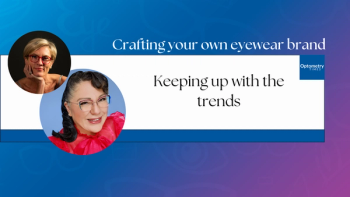
Premium optical lenses redefine the possibilities of vision clarity
Today, the expanding array of digital lenses, freeform lenses and premium treatments allows users to experience the same "WOW" all over again.
Look, Mommy. Trees have leaves," my 11-year-old self exclaimed with delight when I experienced the clarity of my first eyeglasses.
Today, the expanding array of digital lenses, freeform lenses, and premium treatments allows me to experience that same "WOW" all over again.
As an eye-care professional, you might think that premium prices make crisp vision impossible to sell. Is it hard to imagine patients paying $600, $800, $1,000 or more for spectacle lenses? According to the producers of premium lenses and lens treatments, consumers recognize the difference in vision and the market is growing.
"Superior lens design that uses wavefront software is available to the U.S. consumer," Dr. Purcell pointed out. "This uniquely custom lens is then produced digitally."
For premium lenses to see market-share growth, you and your eye-care team must understand the optics behind the advancement and be prepared to educate patients.
Michael Rybacki, senior vice-president, sales and marketing, Seiko Eyewear, credits Seiko with inventing and pioneering digitally generated lenses in Japan and Europe in the mid-1990s, and for the past 5 years in the United States. Rybacki encouraged practice owners and managers who want to expand premium product sales to educate consumers using simple explanations of the benefits of freeform technology and emphasize the clarity available with full back-sided digital lenses.
Indoctrinate staff and patients
The premium product experience seldom means just one facet of today's spectacle lens technology.
"With premium lens options, one plus one equals three," suggested Carole Bratteig, professional development manager, optometry, Transitions Optical. "Practices that combine premium lens options enhance the consumer's appreciation of the value of each. As new digital technologies continue to grow we see the sales of photo-chromic lenses increasing as well."
Newsletter
Want more insights like this? Subscribe to Optometry Times and get clinical pearls and practice tips delivered straight to your inbox.









































